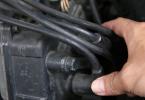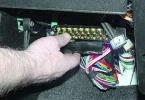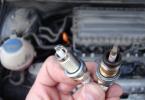The starter is one of the mechanisms of the engine ignition system, without which it will be impossible to start. Like any other device, this unit has characteristic malfunctions that many motorists face. What to do if the starter does not turn, and the retractor coil clicks, we will tell you in this article.
Why does the starter relay and the solenoid relay click?
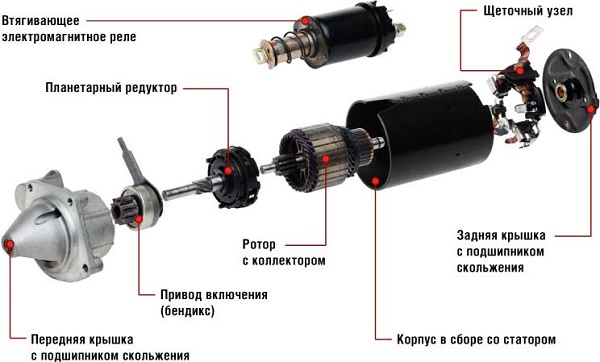
A starter is an electrical device that is essentially an electric motor designed for short-term loads. In general, the operation of many different devices is accompanied by characteristic sounds. As for the starter unit, in this case it is a click, which is the first sign of the mechanism's operability. But sometimes the click can work, but the starter cannot start the engine normally - this problem is known to many of our compatriots.
All relays use the electromagnetic method of connecting the contacts. When voltage is applied to the system, the terminals, which are mounted on flexible or movable clamps, are attracted to each other. In doing so, they receive opposite-pole charges. As the surface of the terminals accelerates, these elements begin to clap against each other, it is at this moment that a characteristic click is heard on the starter.
More experienced motorists will be able to easily understand from this click whether the relay of the mechanism can be pulled in and, accordingly, work in normal mode or not. To ensure the smooth operation of the power unit and its start-up at any time of the year, it is important that all components of the ignition system are functional.
If you look at the starting system from the side, then the following devices and elements are used in the motor starting circuit:
- accumulator battery;
- egnition lock;
- mechanism relay;
- directly the starter itself.
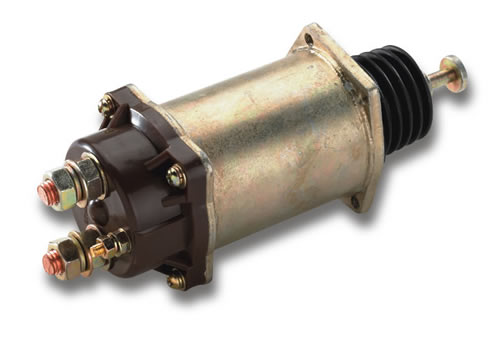
In the event that there are problems with starting the power unit, you do not need to immediately blame the starter for this. The problem may lie in a discharged battery, so usually when faced with a similar problem, motorists first of all check the battery charge level. In some cases, the cause of the malfunction may be a break in the ground wire between the power unit and the vehicle body. To check, it is necessary to diagnose the connection of the ground cable to the body and, if necessary, fix it more reliably. Much less often it can be oxidation of the wire, in this case, the contact just needs to be cleaned.
Troubleshooting method
Everything is much easier if, when trying to start the power unit, the system gives out signs of life.
As mentioned above, the main reason for the inability to start the internal combustion engine is a discharged battery, but if the problem is not in it, then the reason may be:
- poor contact or damage to the electrical circuit;
- failure of the ignition lock or malfunctions in the contact group;
- failure of the starter device;
- failure of the solenoid relay.
As you can see, there are several options. In order to understand the breakdown as quickly as possible, you need to understand what is being checked first. Since in practice usually the reason lies precisely in the battery, it is necessary to diagnose its charge and, if necessary, recharge the battery. Sometimes it happens that even after charging the battery cannot function normally. You can find out more about the reasons and ways to solve the problem with poor charging from this one (the author of the video is AUTO CUT).
If the problem lies in the starter assembly, then it will need to be dismantled and disassembled for troubleshooting. It will not work quickly, it will take some time. Of course, you can always change the mechanism, but not every motorist is ready to pay for such a pleasure without understanding the problem. To understand how the device works, check out this.
So, how to proceed in such cases:
- First you need to dismantle the mechanism from your car, for this use the service book. The dismantling procedure depends on the model of the machine, so we will not describe it. After the device is dismantled, you can start checking it.
- For diagnostics, you need a rechargeable battery, you just need to be sure that it is working.
- The mass from the battery is connected to the starter housing, and the plus must be connected to the bushing after the relay.
- If, after performing these actions, the mechanism began to work, then this indicates that the retractor relay is out of order. If the node does not react in any way to your actions, then most likely you will have to further disassemble it and look for the reason.
- The solenoid relay itself is a structural element, the same as the brushes, which constantly functions. Therefore, it is not surprising that these components periodically fail.
Conclusion
If it was not possible to detect a malfunction at home, it may make sense to send the starter motor for diagnosis to specialists. If you are sure that the problem lies in it, but you do not have time to look for the cause and repair the unit, the mechanism can always be changed. It is not difficult to do this - it is enough just to dismantle the old mechanism and replace it with a working one.
